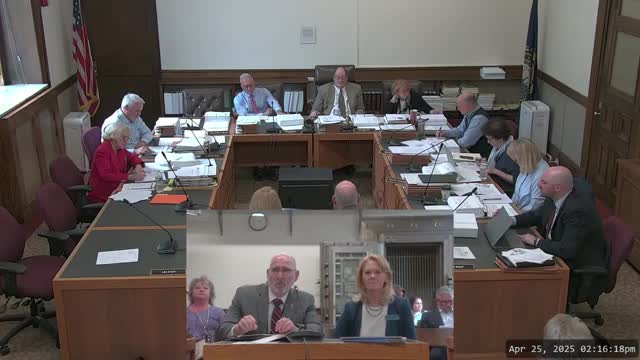Community colleges cite role in workforce, ask to retain early‑college and workforce funds
April 25, 2025 | Senate , Committees , Legislative, New Hampshire
This article was created by AI summarizing key points discussed. AI makes mistakes, so for full details and context, please refer to the video of the full meeting. Please report any errors so we can fix them. Report an error »

Mark Rubinstein, chancellor of the Community College System of New Hampshire, and Shannon Reid, director of government affairs and communications, briefed the Senate Budget Committee on the system’s alignment with workforce needs and asked that core investments remain in the final budget.
The system said it served about 24,000 students last year, including roughly 12,000 in credit programs, 10,000 early‑college students and 2,500 in workforce or noncredit programs. “We build bridges that help students with interest and potential and motivation find opportunities that align with the needs of New Hampshire,” Reid said.
Why it matters: committee materials showed state labor‑market projections highlighting strong demand for healthcare and associate‑degree occupations, and a separate table for high‑demand credentials below the associate level (certificates, LNAs, CDL training, HVAC and similar programs). The chancellor and staff said these programs feed immediate workforce openings and that recent state investments enabled expansion of LNA and medical‑assistant programs at multiple campuses.
Budget notes: the governor’s budget proposed continued support for dual and concurrent enrollment, a workforce credential program and a two‑year tuition freeze; the House reduced dual enrollment funding from the governor’s level and flattened math‑learning community funding while leaving early‑childhood and workforce investments intact. The chancellor noted the system’s share of the state’s “unique” scholarship funds is about $3 million a year, with roughly $2 million for direct financial aid and $1 million for endowment.
Ending: the community college leaders stressed regional campus access and apprenticeships, and urged the Senate to consider restoring early‑college and dual‑enrollment funding in recognition of the program’s return on investment in credits earned, avoided student debt and workforce attachment.
The system said it served about 24,000 students last year, including roughly 12,000 in credit programs, 10,000 early‑college students and 2,500 in workforce or noncredit programs. “We build bridges that help students with interest and potential and motivation find opportunities that align with the needs of New Hampshire,” Reid said.
Why it matters: committee materials showed state labor‑market projections highlighting strong demand for healthcare and associate‑degree occupations, and a separate table for high‑demand credentials below the associate level (certificates, LNAs, CDL training, HVAC and similar programs). The chancellor and staff said these programs feed immediate workforce openings and that recent state investments enabled expansion of LNA and medical‑assistant programs at multiple campuses.
Budget notes: the governor’s budget proposed continued support for dual and concurrent enrollment, a workforce credential program and a two‑year tuition freeze; the House reduced dual enrollment funding from the governor’s level and flattened math‑learning community funding while leaving early‑childhood and workforce investments intact. The chancellor noted the system’s share of the state’s “unique” scholarship funds is about $3 million a year, with roughly $2 million for direct financial aid and $1 million for endowment.
Ending: the community college leaders stressed regional campus access and apprenticeships, and urged the Senate to consider restoring early‑college and dual‑enrollment funding in recognition of the program’s return on investment in credits earned, avoided student debt and workforce attachment.
View full meeting
This article is based on a recent meeting—watch the full video and explore the complete transcript for deeper insights into the discussion.
View full meeting
